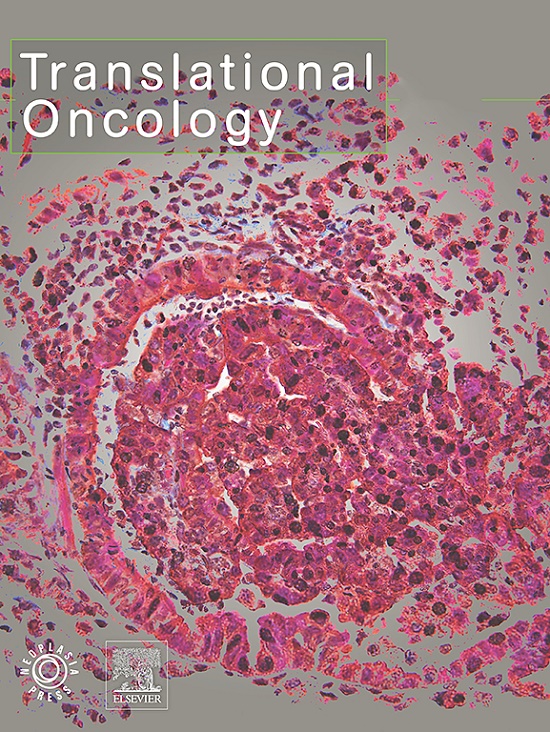Clonal hematopoiesis of indeterminate potential is a risk factor of gastric cancer: A Prospective Cohort in UK Biobank study
IF 5
2区 医学
Q2 Medicine
引用次数: 0
Abstract
Importance
Gastric cancer is often diagnosed at an advanced stage and at order age, identification of high-risk population is needed for detection of early-stage gastric cancer.
Objective
To examine whether clonal hematopoiesis of indeterminate potential (CHIP) is a risk factor of gastric cancer.
Design
This cohort study used data from the UK Biobank collected from baseline (2006–2010) to the end of follow-up in March 2024.
Setting
Data on age, sex, race, alcohol consumption, smoking status and type 2 diabetes were collected at baseline interview. Previous and diagnosed cancer or diseases were collected from self-reported and in-hospital records.
Participants
Participants with no previous cancer or hematologic disorders were selected. Participants with gastric cancer cases were aged 60.7 (S.D. 6.62), 71.8 % male; controls were aged 56.1 (S.D. 8.11), 47.4 % male.
Exposures
Whole-exome sequencing was performed on blood samples collected at baseline. A CHIP status was identified based on the mutations on 43 CHIP-related genes.
Main outcomes and measures
Odds ratio (OR) of CHIP with gastric cancer risk was estimated using multivariable logistic regression models. Participants were grouped based on age and CHIP status to examine if there are differences in the cumulative incidence of gastric cancer.
Results
Among 402,253 participants, 1,070 incident gastric cancer cases were identified (mean age, 60.7 ± 6.62 years). The prevalence of CHIP at baseline was associated with an increased risk of gastric cancer (cases: 6.54 % vs. controls 5.14 %; OR without adjustment, 1.29; 95 % CI, 1.004 to 1.63). The stratified OR (95 % CI) of individuals aged ≥ 57 was 1.33 (1.02 to 1.72) for overall CHIP, whereas the OR for younger individuals was 0.79 (0.37 to 1.44). CHIP involving DNMT3A (OR, 1.81; 95 % CI, 1.05 to 2.88; P = 0.0193) and ASXL1 (OR, 2.43; 95 % CI, 0.95 to 4.99; P = 0.032) was associated with an increased risk of gastric cancer. These positive associations remained significantly in sensitivity analyses adjusted by known risk factors. Compared to younger individuals and non-CHIP carriers, older participants with CHIP exhibited a significantly higher cumulative incidence of gastric cancer (P < 0.0001).
Conclusions and relevance
CHIP is associated with gastric cancer in the elderly and contributes to the positive association between DNM3A and ASXL1 mutations and risk of gastric cancer.
潜力不确定的克隆造血是胃癌的危险因素:英国生物银行研究的前瞻性队列。
重要性:胃癌多发生在晚期和低龄,早期胃癌的发现需要对高危人群进行识别。目的:探讨不确定电位克隆造血(CHIP)是否是胃癌发生的危险因素。设计:该队列研究使用了从基线(2006-2010年)到2024年3月随访结束时收集的英国生物银行数据。背景:在基线访谈时收集年龄、性别、种族、饮酒、吸烟状况和2型糖尿病的数据。以前和诊断出的癌症或疾病从自我报告和住院记录中收集。参与者:既往无癌症或血液系统疾病的参与者。胃癌患者的年龄为60.7岁(sd = 6.62),男性占71.8%;对照组年龄56.1岁(标准差8.11),男性占47.4%。暴露:对基线采集的血液样本进行全外显子组测序。基于43个CHIP相关基因的突变,确定了CHIP状态。主要结局和指标:采用多变量logistic回归模型估计CHIP与胃癌风险的比值比(OR)。参与者根据年龄和CHIP状态分组,以检查胃癌累积发病率是否存在差异。结果:在402253名参与者中,确定了1070例胃癌病例(平均年龄60.7±6.62岁)。CHIP在基线时的患病率与胃癌风险增加相关(病例:6.54% vs.对照组5.14%;不调整OR为1.29;95% CI, 1.004 - 1.63)。年龄≥57岁的个体总体CHIP的分层OR (95% CI)为1.33(1.02 ~ 1.72),而年轻个体的OR为0.79(0.37 ~ 1.44)。涉及DNMT3A的CHIP (OR, 1.81;95% CI, 1.05 ~ 2.88;P = 0.0193)和ASXL1 (OR, 2.43;95% CI, 0.95 ~ 4.99;P = 0.032)与胃癌风险增加相关。在已知危险因素调整后的敏感性分析中,这些正相关仍然显著。与年轻人和非CHIP携带者相比,年龄较大的CHIP患者胃癌的累积发病率明显更高(P < 0.0001)。结论及相关性:CHIP与老年人胃癌相关,并参与了DNM3A和ASXL1基因突变与胃癌发病风险的正相关。
本文章由计算机程序翻译,如有差异,请以英文原文为准。
求助全文
约1分钟内获得全文
求助全文
来源期刊

Translational Oncology
ONCOLOGY-
CiteScore
8.40
自引率
2.00%
发文量
314
审稿时长
54 days
期刊介绍:
Translational Oncology publishes the results of novel research investigations which bridge the laboratory and clinical settings including risk assessment, cellular and molecular characterization, prevention, detection, diagnosis and treatment of human cancers with the overall goal of improving the clinical care of oncology patients. Translational Oncology will publish laboratory studies of novel therapeutic interventions as well as clinical trials which evaluate new treatment paradigms for cancer. Peer reviewed manuscript types include Original Reports, Reviews and Editorials.
 求助内容:
求助内容: 应助结果提醒方式:
应助结果提醒方式:


